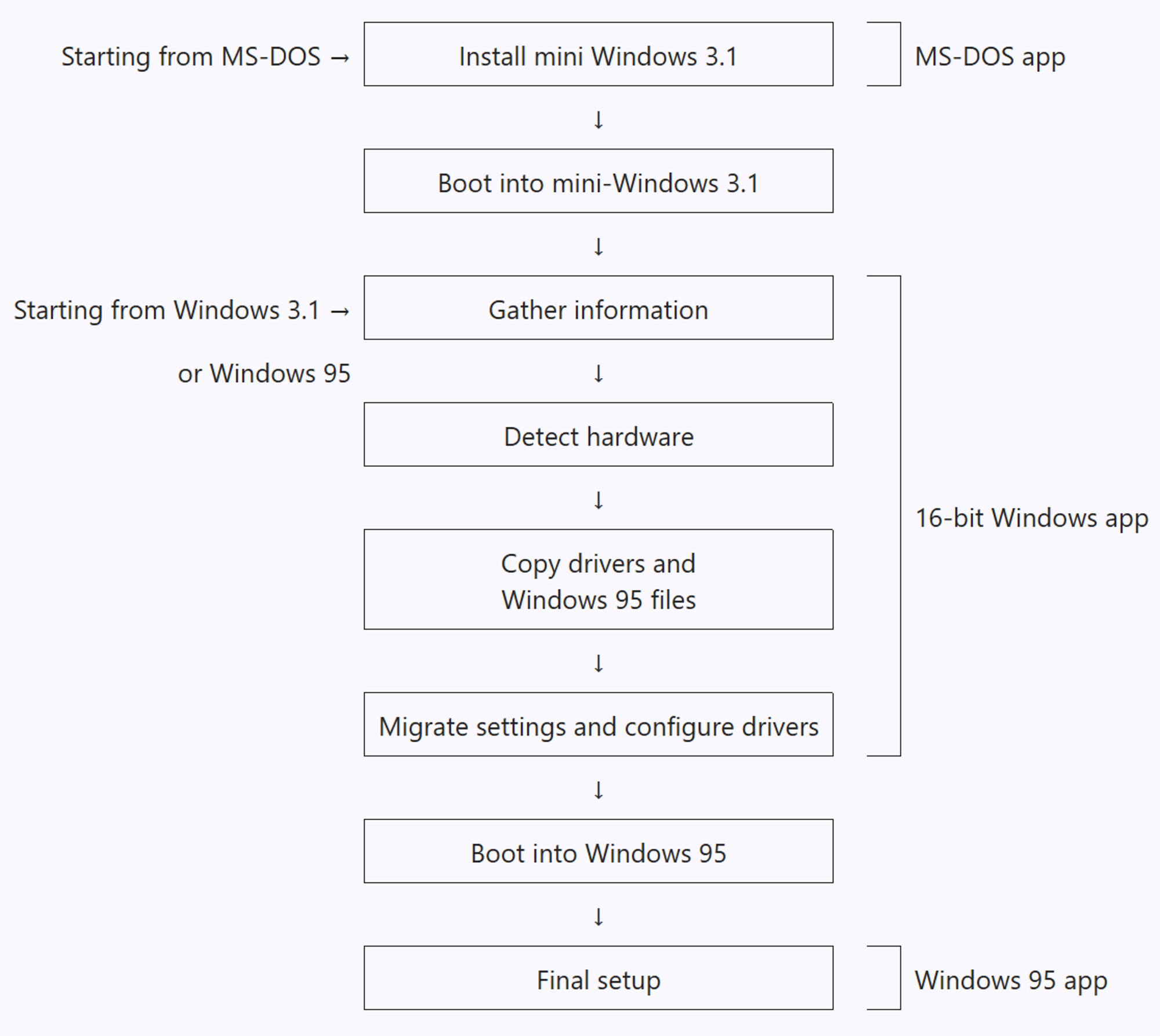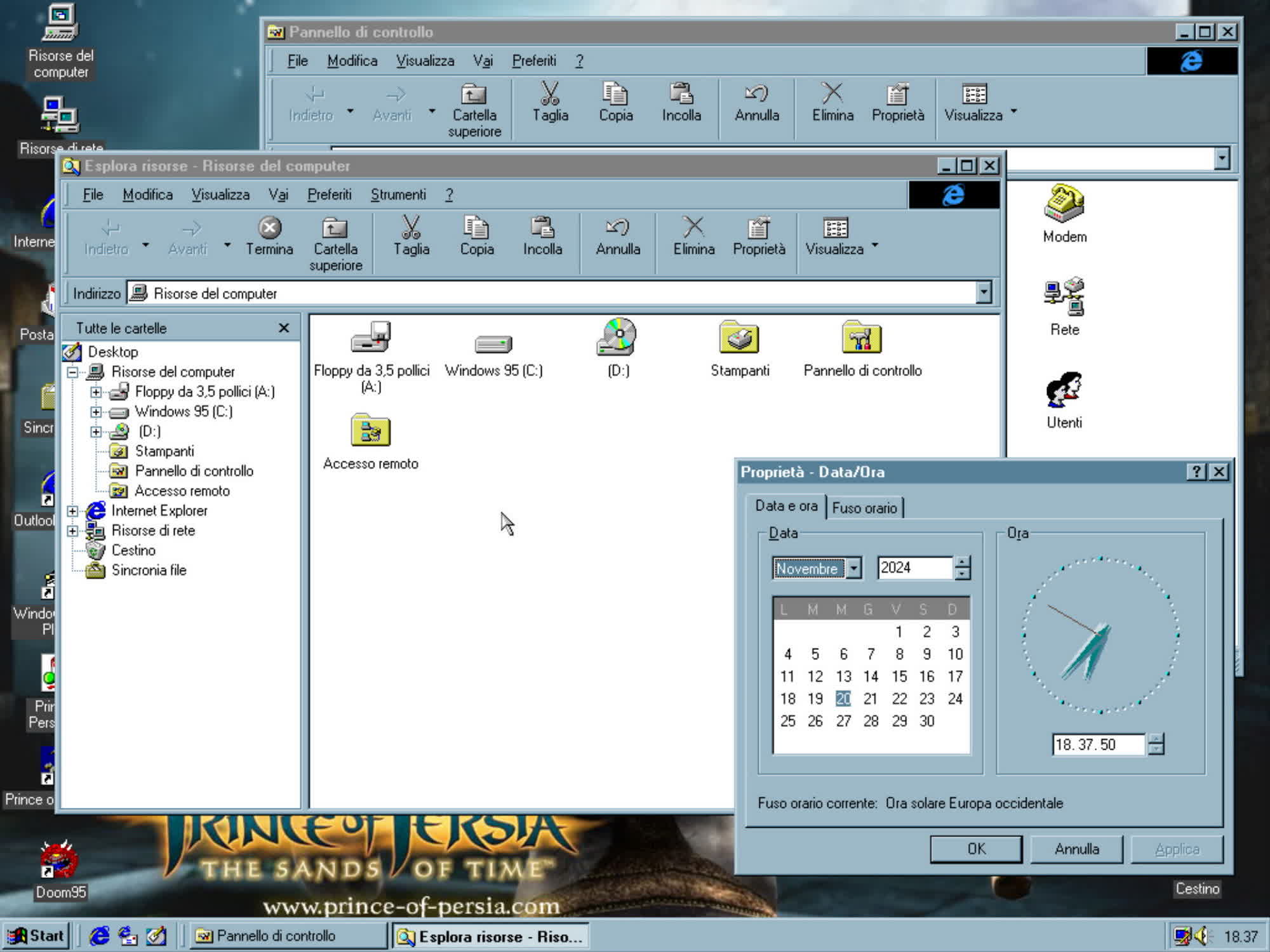Retro Potato: Longtime Microsoft software program engineer Raymond Chen not too long ago responded to an intriguing retro-tech query posed by a sport developer on X. The developer inquired in regards to the three distinct person interfaces used throughout the Home windows 95 setup course of, which transitioned from DOS to Home windows 3.x, and at last to the basic Win9x GUI. Chen explaining that it was a deliberate design alternative to reduce the quantity of code required for the Home windows 95 configuration expertise.
Skilled PC customers could also be effectively conscious of the peculiar relationship between MS-DOS code and the GUI atmosphere inside the Win9x ecosystem. Nonetheless, in keeping with Chen, the multi-OS assist constructed into the Home windows 95 setup program was way more subtle than it’d initially appear.
With over 30 years of expertise shaping the evolution of Home windows, Chen holds deep insights into the hidden intricacies of one of many world’s most generally used software program platforms. Writing The Outdated New Factor weblog, he mentioned Home windows 95 setup was designed to improve methods from three potential beginning factors – MS-DOS, Home windows 3.1, and Home windows 95 itself. This necessity dictated the necessity for compatibility with three distinct computing environments.

The setup program was primarily written as an MS-DOS utility however was designed to run on three completely different working methods to carry out distinct duties. The DOS portion was needed when setup was launched from the MS-DOS immediate, as accessing the Win9x atmosphere would have been not possible with out first putting in it on the onerous drive.
Additionally see: Who wrote the BSOD display? Former Home windows developer lastly has a solution
The MS-DOS setup part put in a minimal model of Home windows 3.1 – simply sufficient to assist the 16-bit portion of the setup device. After booting into this miniature Home windows 3.1 atmosphere, the 16-bit GUI setup program would launch. This utility might additionally run in a full Home windows 3.x atmosphere and even inside an already put in Home windows 95 OS, enabling customers to restore a corrupted system if needed.
The 16-bit Home windows utility was the centerpiece of the method, Chen defined, because it dealt with nearly all of duties required for the “actual” Home windows 95 set up. This graphical interface managed person interplay, collected configuration information, decided which OS elements to put in, and carried out {hardware} detection to pick out the suitable drivers.
After copying the Home windows 95 recordsdata and drivers to the system, the 16-bit setup booted into the Win9x atmosphere. The third and remaining setup stage concerned a real Win32 utility, which finalized the set up by dealing with duties akin to putting in printers and configuring different peripherals.
By chaining collectively these three setup packages, Microsoft was in a position to streamline growth by reusing a single codebase throughout all three predominant set up eventualities. “Every program takes you one step nearer to the purpose. And all the things bought applied solely as soon as,” the developer mentioned.
